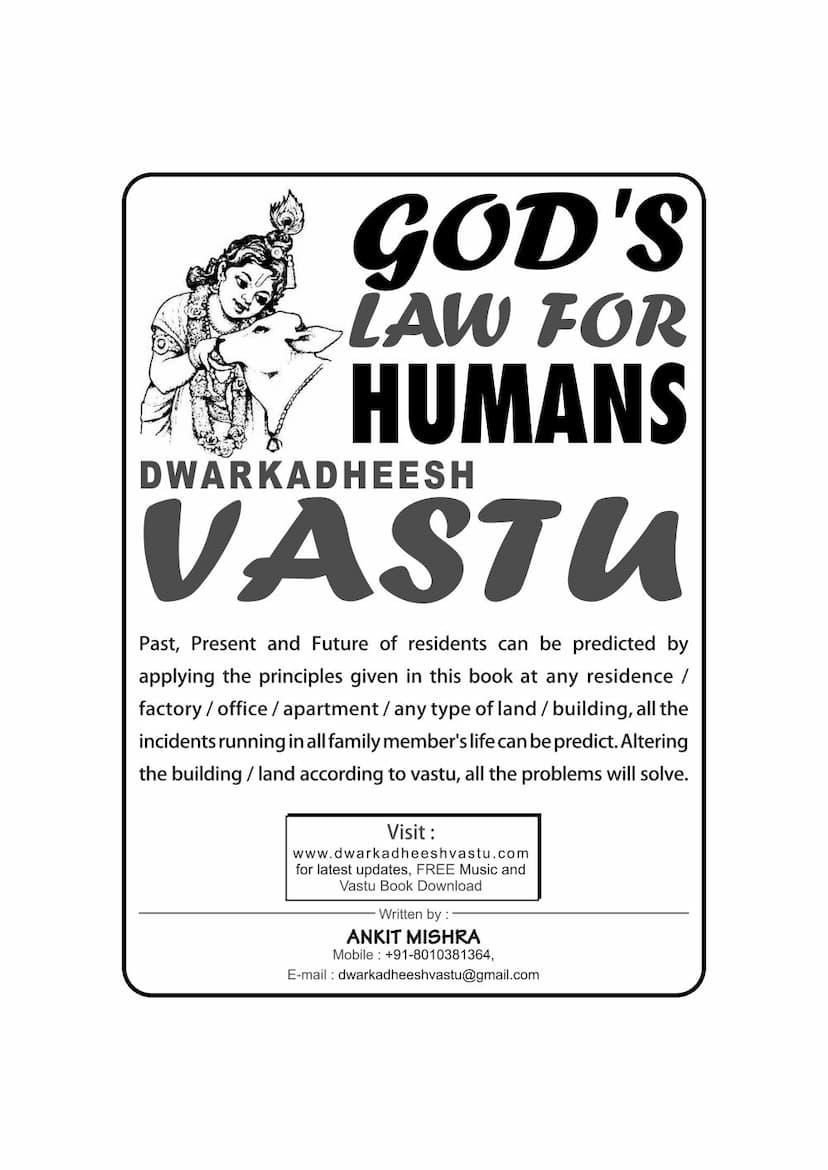Vaastu Principles English
Added to library: September 2, 2025

Summary
This document, "Vastu Principles English" by Ankit Mishra, published by Ankit Mishra, aims to provide readers with a comprehensive understanding of Vastu Shastra, a traditional Indian system of architecture and design. The book asserts that by applying its principles to residences, factories, offices, apartments, or any type of land or building, one can predict the past, present, and future events in the lives of its occupants and resolve their problems.
Core Tenets and Beliefs:
- Divine Will and Cosmic Order: The text emphasizes that nothing in the universe moves without a higher will and that Vastu knowledge is a revelation of this divine order. It likens Vastu laws to natural laws like planetary movements and seasonal changes, asserting that nature provides for all living beings according to its rules.
- Harmony with Nature: The book promotes aligning one's living space with Vastu principles to achieve harmony with nature.
- Destiny and Residence: It is believed that families naturally gravitate towards residences that are appropriate for their endeavors.
Key Vastu Principles and Their Effects:
The book extensively details the effects of various Vastu elements and configurations, often categorizing them based on the direction and whether the plot is regular or skewed. These effects are categorized by their impact on:
- Family Members: Specifically mentioning the head of the family, male/female members, and children (categorized by birth order).
- Well-being: Health issues, mental tension, irritability, bad habits.
- Financial Status: Indebtedness, financial stringency, loss of finance, insolvency, lack of prestige.
- Social Standing: Loss of name and fame, low respect in society.
- Legal and Administrative Matters: Court cases, problems with administration, getting convicted, going to jail, accidents, and death.
- Family Harmony: Marital discords, disputes, fights.
- Progeny: Loss of progeny, having no children, abortions.
Specific Elements Discussed and Their Impact:
The text provides detailed explanations and diagrams for the following Vastu aspects:
- Main Entrance/Doors: The location of the main door is crucial, with specific directions being auspicious or inauspicious.
- Stairs and Staircase Covers: Placement and construction of stairs are analyzed for their effects.
- Kitchen Placement: The ideal location for kitchens and precautions during slab casting are outlined.
- Toilet Placement: The positioning of toilets is discussed, with a note on modern toilets being cleaner.
- Septic Tanks: Their location and impact are detailed.
- Boring, Underground Tanks, Ditches, Sumps: The consequences of these elements being inside or outside the house are explained.
- Plinth Level and Drainage: The importance of proper slope and drainage is highlighted, emphasizing lower levels in the East, North, and Northeast.
- Platforms: The effect of platform levels relative to flooring is analyzed.
- Basement Construction: The benefits and drawbacks of basements in different orientations and neighboring structures are thoroughly discussed.
- Compound Walls/Parapet Walls/Railing: Specific guidelines for their construction, thickness, height, and absence of spikes/glass on certain walls are provided.
- Balconies and Projections: The impact of balconies, especially their placement and construction on different sides of a building, is elaborated upon.
- Shafts, Ducts, and Open Areas: Their effects are analyzed based on their location and whether they are covered or left open.
- Corners of Plots/Buildings/Rooms: The consequences of extending or constricting corners are detailed.
- Electric Wires and Ropes: The impact of their placement on building structure is mentioned.
- Roof Slab Construction: The importance of an even roof slab without slopes is emphasized.
- Terrace Construction: The effects of lower or higher levels, overhead water tanks, and constructions on the terrace are extensively covered, often linking them to the impact on specific rooms on lower floors.
- Street Thrust: The influence of roads or streets directly facing specific sides or corners of a plot is a significant focus, with detailed explanations of benevolent and malevolent effects.
- Neighborhood Buildings/Rooms: The impact of neighboring structures, their heights, and the flow of energy from them is analyzed.
- Flats in Apartment Complexes: The effects of Vastu defects are discussed in the context of individual flats within larger buildings, particularly concerning the placement of staircases.
- Children's Place in Home/Bedroom: Specific areas are identified as influential for particular children based on their birth order.
- Vastu Defects Identified by Sun Position: The book links Vastu defects to the sun's position at different times of the day.
Key Methodologies:
- Direction Determination: The book explains how to determine directions using a compass and by observing the sun.
- Plot Division: It details the division of plots into nine parts (Vastu Purush Mandala) for analysis.
- Identification of Defects: The core of the book lies in its extensive tables and diagrams illustrating how specific Vastu defects (e.g., a kitchen in the Northwest) lead to specific negative outcomes for occupants.
- Remedial Measures: For most described defects, the book suggests remedies, which often involve making changes to the construction, filling in certain areas, or creating separating walls.
Target Audience and Purpose:
The document is clearly intended for individuals seeking to improve their lives through Vastu Shastra. It offers practical guidance and predictions, implying that adherence to its principles can lead to a more prosperous, healthy, and harmonious existence. The availability of free downloads of music and Vastu books via the mentioned website (www.dwarkadheeshvastu.com) further indicates a promotional aspect to the publication.